What's so great about the Rubin Observatory, which is expected to revolutionize astronomy?

In mid-April 2025, the NSF Vera C. Rubin Observatory (Rubin Observatory), which is being constructed on Mount Pachón in Chile, South America, conducted its first test observation ( first light ). The Rubin Observatory is said to be a groundbreaking observatory that is expected to revolutionize astronomy, and the scientific journal Science explains what is so amazing about it.
This giant, all-seeing telescope is set to revolutionize astronomy | Science | AAAS
https://www.science.org/content/article/giant-all-seeing-telescope-set-revolutionize-astronomy
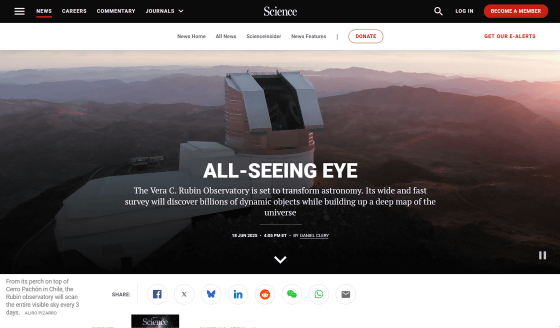
The Rubin Observatory, located at an altitude of 2,650 meters on Mount Pachon, was built at a cost of $800 million with funding from the National Science Foundation , the Department of Energy , and private donors. The Rubin Observatory has a huge visible light telescope with an aperture of 8.4 meters, and can capture an area equivalent to 45 full moons in one shot.
At each shooting location, a 3-ton, car-sized camera records the view with an array of 189 photosensors cooled to -100°C, allowing for ultra-clear images of 3200MP (megapixels). Each image can be captured with a 30-second exposure time, and the telescope rotates smoothly to move to another view in just under 5 seconds. Science explains, 'It's clear that this giant telescope is built for speed,' and 'When I pressed a button on my laptop, the towering telescope started to move, and soon it began to rotate effortlessly on a thin oil film. The telescope's cyclops-like eyes tilt up and down, and the motor hums quietly as the dome rotates.'
The Rubin Observatory's wide field of view and high speed of travel allow it to build a patchwork image of the entire sky as seen from Chile in just three nights. By repeating this all-sky photography many times and comparing the new images with previous ones, it is possible to detect celestial objects that require further observation. The images are sent to the image processing center at SLAC National Accelerator Laboratory in California, USA, which issues up to 10,000 alerts per image within one minute of capture. SLAC National Accelerator Laboratory is said to be able to process up to 1,000 images per night.
SLAC's alerts do not identify the objects they identify, but instead are analyzed by software developed by the astronomy community. This software, called 'alert brokers,' categorizes the alerts based on the data, identifies objects that urgently need additional observations, and in some cases automatically sends requests for additional observations to robotic telescopes around the world.
Rubin Observatory generates 20 TB (terabytes) of image data every night, and it is expected that a year after the start of observations, the amount of data accumulated by Rubin Observatory will exceed all optical astronomy data ever generated. Full-scale observations at Rubin Observatory are scheduled to begin in 2025, and as of May, staff were practicing the procedures required for nightly shooting and fine-tuning the cameras.
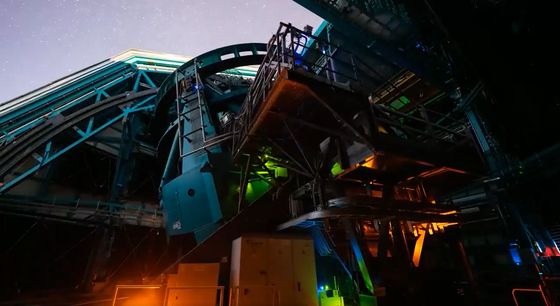
Tony Tyson, an astronomer at the University of California, Davis and Rubin Observatory's chief scientist, says he came up with the idea for the Rubin Observatory more than 25 years ago. At the time, Tyson was working at
To achieve this technique, called ' weak gravitational lensing ,' a camera sensitive enough to observe distant galaxies is needed. Tyson and his team developed a 4MP chip, an astounding 4MP at the time, and installed it on the Victor M. Blanco 4m telescope at the Cerro Tololo Inter-American Observatory in Chile.
One night, while in the control room of the Victor M. Blanco 4-m Telescope, Tyson realized that it would be more efficient to search for dark matter using a wide-field telescope that could capture a wide range of light at once. Tyson teamed up with Roger Angell, an astrophysicist at the University of Arizona who has built the 'mirrors' used in some of the world's largest telescopes, to come up with a method using an 8.4-m primary reflector and two focusing mirrors.
In 2001, a plan for the Dark Matter Telescope was approved, and in 2021, as construction progressed, it was renamed the NSF Vera C. Rubin Observatory after astronomer Vera Rubin , who died in 2016. Rubin was the one who demonstrated the existence of dark matter in the galaxy, which exceeds the total mass of celestial objects, by observing the rotation speed of the galaxy.
The Rubin Observatory's structure is illustrated below: The green part is the moving mount, which floats on the oil slick.
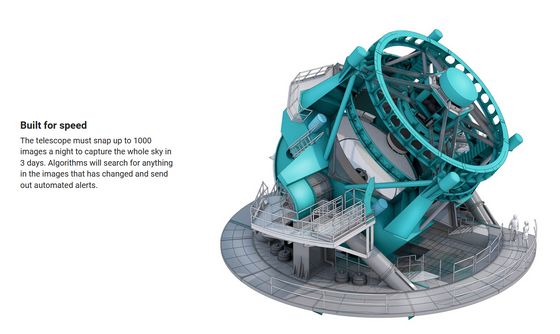
The primary mirror in the center is about 8.4 meters in size and allows us to observe galaxies from 11 billion years ago.
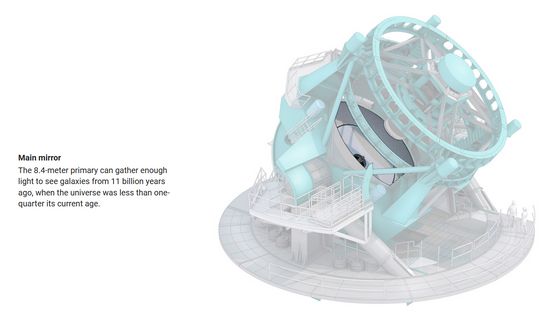
The ring-shaped primary mirror is surrounded by a second and third mirror of a different shape, creating a unique three-mirror optical system that is said to be able to capture distortion-free images across the entire field of view.
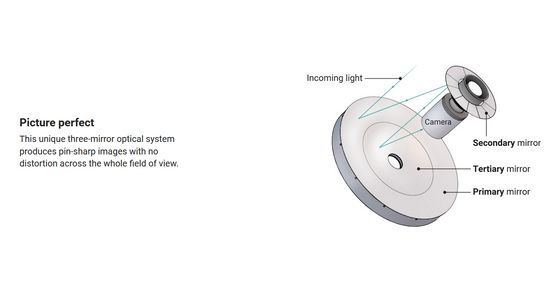
You can get a good idea of how the 8.4m primary mirror was coated by watching the YouTube video below.
The material you see in the center is glass, the material the primary mirror is made of.
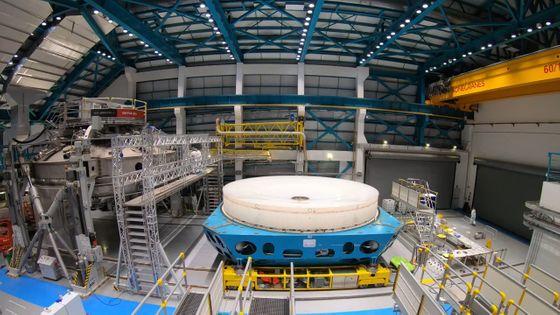
First, the glass is washed, dried and cleaned of dust before being transported to the coating chamber.
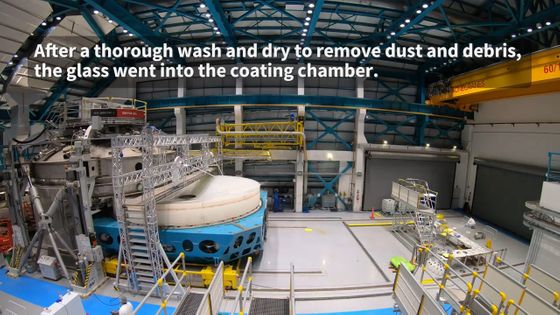
The chamber is then closed and a vacuum is created by removing the air from inside.
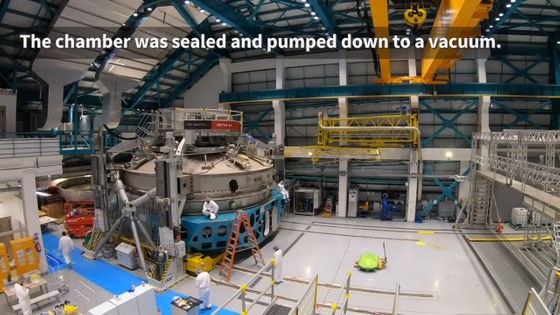
First, a layer of

Next is the silver coating, which is the reflective surface.
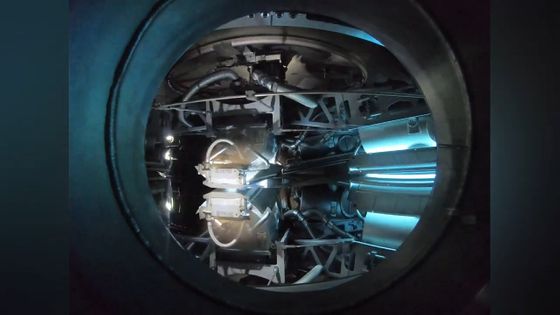
The third layer is again nickel chrome steel for adhesion.
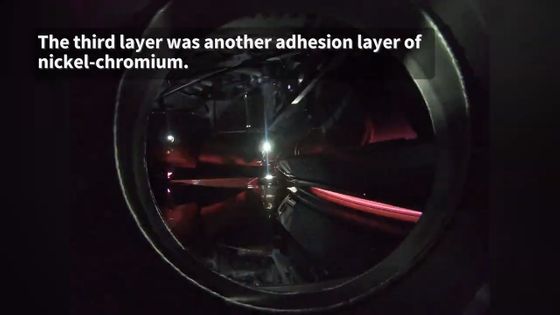
Finally, a protective layer of
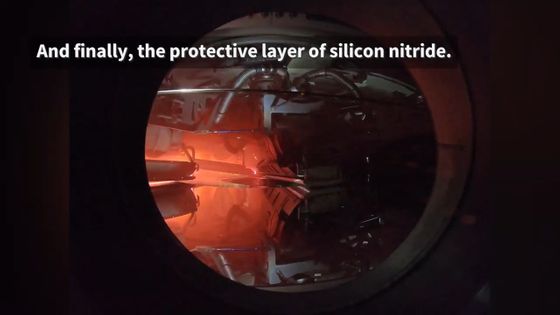
After a coating process lasting 4.5 hours, the huge primary mirror was completed.
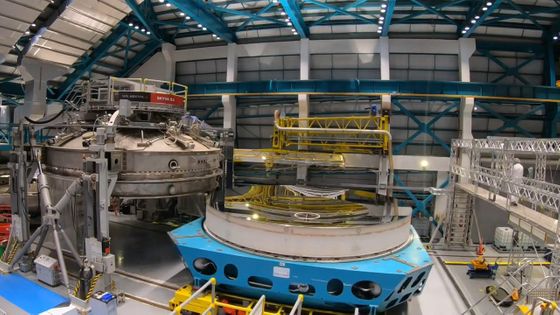
This is what it looks like up close.

The following astronomical results are expected from the Rubin Observatory:
Exploring Dark Energy
When the project first began, the focus was on observing dark matter, but has since shifted to dark energy, which is believed to permeate the entire universe. Like dark matter, dark energy can also be inferred through weak gravitational lensing, which requires observing a huge number of galaxies. Surveys conducted with the Victor M. Blanco 4m telescope from 2013 to 2019 observed hundreds of thousands of galaxies, but the Rubin Observatory plans to observe as many as 20 billion galaxies.
◆ Advances in research into the formation and evolution of galaxies
Rubin Observatory can observe a huge number of galaxies, including fainter and more distant galaxies than have ever been observed before. It is expected that by observing how small, distant galaxies merge and grow, we will gain a deeper understanding of the process of galaxy formation.
◆Discovery of supernovae and observation of kilonovae
Rubin Observatory is expected to detect thousands of supernovae every night in all galaxies, both nearby and distant, and may also be able to observe kilonovae , rare events that occur when two dense objects, such as neutron stars or a neutron star and a black hole, merge together.
New Solar System Objects Discovered
Meg Schwamb, a planetary scientist at Queen's University Belfast , and her colleagues predict that Rubin will discover 3.7 million asteroid belt objects, 32,000 trans-Neptunian objects, 90,000 near-Earth asteroids , and possibly even a hypothetical large object in the outer solar system called Planet Nine .
Continued
Rubin Observatory equipped with the world's largest camera releases images for the first time - GIGAZINE

by RubinObs/NOIRLab/SLAC/NSF/DOE/AURA
Related Posts:
in Science, Posted by log1h_ik






